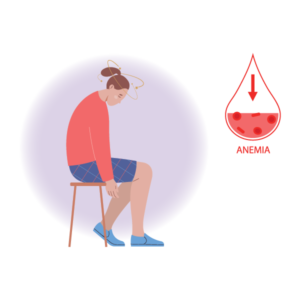
Erythropoiesis-Stimulating Agents and Intra-Dialytic Parenteral Nutrition: A Lifeline for Dialysis Patients
Living with end-stage renal disease (ESRD) and undergoing regular hemodialysis (HD) treatments can be a challenging and life-altering experience.
Dialysis patients often face complications related to anemia and malnutrition, which can significantly affect their quality of life. In fact, one in seven people with chronic kidney disease (CKD) struggle with anemia. Many more with ESRD are affected. Further, the prevalence of protein energy wasting (PEW),
a form of malnutrition, is between 11-54% in CKD with higher prevalence associated with worsened kidney function. This is in part due to many dialysis patients experiencing malabsorption.
Fortunately, there are two crucial interventions that have proven to be game-changers in the care of these patients: Erythropoiesis-Stimulating Agents (ESAs) and Intra-Dialytic Parenteral Nutrition (IDPN).
Read on to learn more about the world of ESAs and IDPN, exploring how these interventions work, their benefits, and their roles in improving the well-being of dialysis patients.
Erythropoiesis-Stimulating Agents (ESAs)
ESAs, such as erythropoietin and darbepoetin alfa, are synthetic versions of a natural hormone produced by the kidneys called erythropoietin. Erythropoietin plays a vital role in stimulating the bone marrow to produce red blood cells. In individuals with ESRD, the kidneys are unable to produce sufficient erythropoietin, leading to anemia, which is a common complication of kidney disease.
ESAs are administered as injections and work by mimicking the action of erythropoietin. They help increase the production of red blood cells, thereby raising hemoglobin levels and improving the oxygen-carrying capacity of the blood. This can alleviate the fatigue, weakness, and other symptoms associated with anemia, ultimately enhancing the patient’s quality of life.
Benefits of ESAs for dialysis patients include:
- Improved Energy Levels – Anemia causes debilitating fatigue. When anemia is corrected patients often report feeling more energetic
and less lethargic. - Reduced Blood Transfusions – In severe cases of anemia patients require blood transfusions. Preventing severe anemia means less transfusions, reduced risk of transfusion-related complications, and conserves the limited supply of blood.
- Enhanced Quality of Life – By addressing anemia, ESAs can improve a patient’s overall well-being, allowing them to engage in daily activities more comfortably and enjoy a better quality of life.
Intradialytic Parenteral Nutrition (IDPN)
Malnutrition is another common issue among dialysis patients. Factors like dietary restrictions, loss of appetite, and inadequate nutrient absorption can lead to nutritional deficiencies. Intradialytic Parenteral Nutrition (IDPN) is a specialized form of nutritional support that is administered during dialysis sessions.
IDPN involves the intravenous infusion of a solution containing essential nutrients such as amino acids. This infusion provides much-needed nutrition directly into the bloodstream, bypassing the digestive system, which may be compromised in some dialysis patients.
Benefits of Intradialytic Parenteral Nutrition (IDPN) include
- Improved Nutritional Status – Intradialytic Parenteral Nutrition (IDPN) helps correct nutrient deficiencies and supports the body’s healing and repair processes. It can lead to weight gain, muscle preservation, and improved overall nutritional status.
- Enhanced Tolerance to Dialysis – Being well nourished through any means can help patients better tolerate their dialysis sessions, reducing the risk of complications during and after treatment.
- Reduced Hospitalizations – By addressing malnutrition, IDPN may reduce the risk of hospitalizations related to nutritional deficiencies and associated complications.
Based on my observations as a Facility Administrator and nurse, I would say the majority of patients that responded to IDPN and IPN therapy with
an increase in serum albumin levels also either decreased or ceased ESA usage. This benefited both the patients and the clinic.
ESAs are a very expensive and hard to dose medications. A small reduction or discontinuation can save a clinic thousands of dollars over time and at the same time reduce risk to the patient.
ESAs and IDPN are indispensable tools in the care of dialysis patients. ESAs alleviate the burden of anemia, while IDPN tackles malnutrition head-on. Together, these interventions can significantly improve the quality of life for individuals with end-stage renal disease. When patients have adequate albumin, nutrition, and blood counts they feel energized, healthier, and vibrant.

This blog was written by Tim Burgess (RN, BSN, EMT-P), a Registered Nurse with Patient Care America. He has been with the company for seven years as Clinical Nurse Support. In this role he trains dialysis clinics and home dialysis patients in the safe and effective use of IDPN and IPN nutrition. Prior to this he was a Facility Administrator for one of the big three dialysis companies in the United States. He has experience with starting a home dialysis department from the ground up and as an in-center and acute hemodialysis nurse. This article is intended to make clinical staff aware of the impact of IDPN/IPN on dosage and utilization of ESA agents after implementation of IDPN/IPN.
For clinician and patient related handouts, please log on to our portal pcacorp.com.
